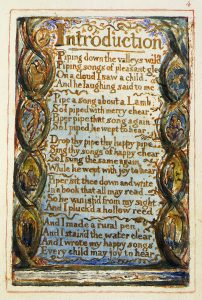The theme of identity pervades throughout Paul Karasik and David Mazzucchelli’s adaptation of Paul Auster’s City of Glass. From as early as page 7, where he comments on how he “had long ago stopped thinking of himself as real” (Karasik 7) and as Paul Auster the detective stands next to him answering the phone, it seems as if there exists conflict in discerning who David is. The theme of identity is tightly connected to both the motif of clothes the motif of eggs. Crucially, David is completely unclothed when he answers the call – and this is when we see Paul Auster the detective physically present. Yet when the second phone call comes, he is clothed and assumes the role of Auster, emphasized as the previously physical Auster does not appear. Unclothed David is vulnerably himself as his inner identities physically manifest whereas clothed David has to assume the role of his inner identity while harboring any others within. Clothes then, represents the way that David has to pretend to be only part of who he is. Much like clothes create an outer layer, Paul Auster is the outer layer that David uses. Nowhere is this assuming of identities more obvious than in his three encounters with Peter Stillman. He assumes the identities of David Quinn, Henry Dark and Peter Stillman (the son) in these three encounters (66-81). Other instances include his identity as author William Wilson (3), Max Work (8) and possibly scribbly face. In particular, in the phrase “in the triad of selves” (8) seemed to have allusions to the Christian trinity – the God, the son and the holy spirit. This suggested that David was as much individual as he was a constituent part of what makes him David. Being both individual and separate at the same time is a difficult concept, but is echoed throughout the book. In the ending however, David comments on how “Mookie Wilson’s real name was William Wilson… The two William Wilsons cancelled each other out” (Karasik 127) suggesting that this may not be healthy for humans. The fact that his identity as an author is William Wilson too also brings in the theme of language and it’s malleability.
This becomes particularly important at the ending, where he unclothes himself in Stillman’s apartment and a panel shows the tombstone of Max Work, one of David’s inner identities (127). It emphasizes that the ‘cancelling out’ between Mookie Wilson and William Wilson has occured accordingly with Max Work – as Paul Auster the detective faded, so did another connected identity. It seems as if we only have access to this when David is physically exposed – when he has no clothes on. Perhaps this is why in page 26,Virginia Stillman is first pictured clothed, then naked. This visual change and play on motif emphasizes how David is seeing through her, but more importantly, that she is not seeing through him. “At any given moment, it was always both (127)” : Virginia believes that David is Paul Auster the detective throughout the entirety of the text.
The theme of identity is emphasized by the motif of clothing, and David’s balance of identities is perhaps all but an extreme of what many of us go through today – we each have our ‘personalities’ with family, friends and in other social situations that define and change who we are. We may not have to take all of our clothes off, but perhaps Auster, Mazzucchelli or Karasik may want the reader to consider centralizing our personalities so that David’s sort of dissonance in personality won’t happen to all of us too.
